I Ching, Yijing or Zhou Yi
"Oracle of the moon": © 2000 LiSe
 Yi Jing, Oracle of the Moon
Yi Jing, Oracle of the Moon

Hex.51 and trigram zhen
The plow of Thunder
March 21, 2020
Everyone calls trigram Zhen "Thunder". Thunder is an attribute, not the name, but the effect of thunder is zhen: shock by thunder, emotional excitement, invigorate, rejuvenate, frightened. Zhen means especially shock, earthquake. Zhen is written as
雨 ‘rain’ over 辰 chén. Thunderclap is léishēng 雷声 or pīlì 霹雳, earthquake is dìzhèn 地震, earth and shock.
辰 chén: 5th of 12 Earthly Branches (Dragon), 7-9 A.M., east, time, day, occasion, time-marker, celestial bodies. Wenlin: it may have depicted an ancient kind of hoe.
Zhen can be the reason why something starts, but most of all it is the moment in time when something starts, a sudden change, a beginning. When the weather and time of the year cause the farmer to start plowing the field. After that it can be sown in, the plants will start growing and finally there will be harvest. Zhen is the start of a new cycle.
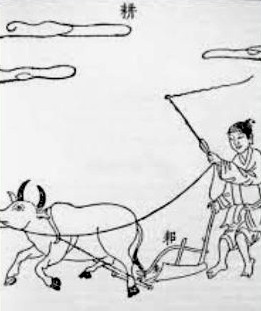
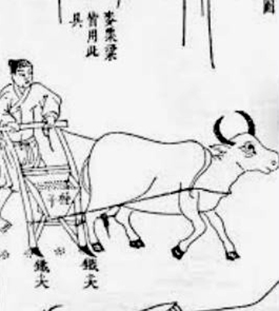
shareplow and scratchplow or ard.
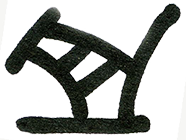
The lower half of the ideogram of chen, plow (rotated).

An old shareplough

Several other versions of chen's ideogram.
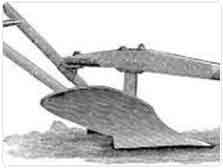

Shock and shake
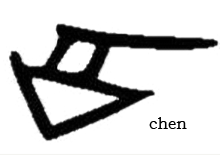 Triangular-shaped stone ploughshares are found at the sites of Chinese Majiabang culture dated to 3500 BC around Lake Tai. Ploughshares have also been discovered at the nearby Liangzhu and Maqiao sites roughly dated to the same period.
Triangular-shaped stone ploughshares are found at the sites of Chinese Majiabang culture dated to 3500 BC around Lake Tai. Ploughshares have also been discovered at the nearby Liangzhu and Maqiao sites roughly dated to the same period.
The British sinologist Francesca Bray argues that the plough was known at least by the Longshan culture period (approximately 3000 – 2000 BC).
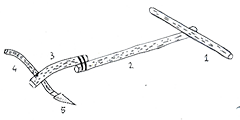
The ard, ard plough,or scratch plough is a simple light plough without a mouldboard. It is symmetrical on either side of its line of draft and is fitted with a symmetrical share that traces a shallow furrow but does not invert the soil. In its simplest form it resembles a hoe.
In the west we have a similar symbol: the scythe of father time. It indicates an end, of the year, of a life. It is also a time marker. After the old year ends, at 'new years eve', a new year starts.